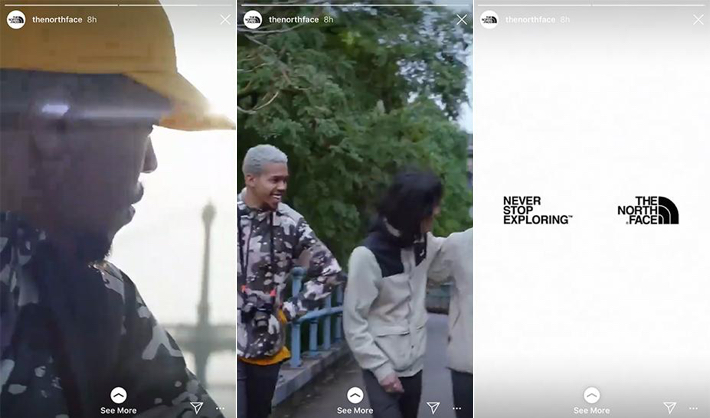To be successful, advertising needs two critical elements: solid branding and the ability to stand out.
From a recruitment perspective, prospective students consider social media advertising less intrusive and perceive it more positively. According to Ruffalo Noel Levitz’s 2018 E-Expectations® Trend Report, high school seniors report an increase in clicks across social media advertisements (Facebook, Youtube, and “other social media or blog posts”). The catch? Our message must break through.
As more brands compete for attention among a sea of user-generated content, the more passive this media environment becomes and the more users are trained to filter out ads (i.e., banner blindness). Likewise, the more important it is to have an understanding of the “attention potential” of each new media and context. So how can we refine our understanding of how advertising works to create better brand effects and enrollment marketing outcomes?
A recent ThinkTV study found that consumers could correctly recall only four percent of campaign exposures within a 10-minute timeframe on Facebook. The study’s focus was a comparative analysis of media attributes across video advertising units (television and online) and how those attributes impact brand growth, proving the difficulty of disrupting the newsfeed.
Knowing this, one has to wonder if the lessons learned from “traditional” advertising effectiveness research might be extended to newer, emerging advertising units like Spotify, Instagram Stories, and Youtube pre-roll ad placements?
To be successful, advertising needs two critical elements: solid branding and the ability to stand out. Getting there requires both an understanding of what brand elements contribute to advertising effectiveness as well as media characteristics that, once understood, will enable better creative strategies.
Lessons From “Traditional Media”
Using TV advertising research to act as a foundation, brand execution effectiveness studies provide clear guidance on how branding should be delivered to produce effects. While parts may seem obvious, what has become evident in terms of positive effects is equally as important as what has had no impact. Across this category of research, four key findings emerge:
- In terms of video advertising, effectiveness is less about persuasion and more about recall. This is partly due to a passive social media environment.
- There is no relationship between the duration of branding and recall or persuasion, meaning more branding doesn’t necessarily mean better branding.
- Early brand presence is a driving force for brand recall. While this may seem intuitive, in Viral Marketing, researchers found, on average, more than a third of all social videos conclude with the brand shown only at the end.
- Across multiple studies, visual brand frequency was found to be more impactful than verbal. However, there is still power in combining both visual and verbal branding; it’s about finding the right balance with each channel. Once again, this may seem intuitive, but only 6 percent of social media advertisements contain both. Interestingly, subtitles are not typically an effective solution even though most ads have adopted them.
Media Attributes That Matter
Beyond establishing principles of effectiveness, it’s important to consider the placement of our ads and what media attributes may affect the impact of the advertising. Elements such as attention, environmental clutter, and brand prominence play a role in advertising performance.
Attention in Context
In terms of attention, not only should we consider effective creative drivers (i.e., emotions, setting, story), but also how the specific channel or ad type delivers attention. For example, alignment between ad and context (the channel) can amplify Halo Effects, meaning an ad is more likely to be processed as well as viewed favorably. Knowing that Spotify is likely used in a gym/exercise setting, performance-related messaging or brands in the health and wellness space have a stronger opportunity to have an impact and lessen ad avoidance.
Social Clutter
Perhaps clutter goes hand-in-hand with attention, but one primary distinction is its effect on recall. While an ad may be visible within a newsfeed, how exposure occurs is important (how much of the screen is covered by the ad and what surrounds the ad). Frequency may also be easier to achieve under budget restraints, yet Facebook routinely underperforms when it comes to recall studies. Unfortunately for some social media platforms, the amount of screen coverage limits the potential of the ad, an element shown to have a positive relationship with attention and sales.
Brand Prominence
Lastly, brand prominence within a channel is important. Research from ThinkTV found that ads that produced greater sales impact showed the brand at twice the size of poorly-performing ads, showed the brand almost twice as often, and were 25% more likely to display the brand within the first two seconds.
Examples and Takeaways for Higher Ed Marketers
Combining both principles of effectiveness and an understanding of how media elements can help drive better outcomes, we can apply these learnings to newer advertising opportunities.
Instagram Stories
Instagram Stories enjoy both complete screen coverage and static/dynamic ad delivery. In many cases, brands adopt either a billboard-like approach to the creative or a video-driven narrative (think commercial).
In either approach, to enable easier recall, consider: showing the brand logo within the first few seconds, incorporating assets distinct to your brand, and delivering messaging using uncluttered visuals.
Instagram Story as Billboard











